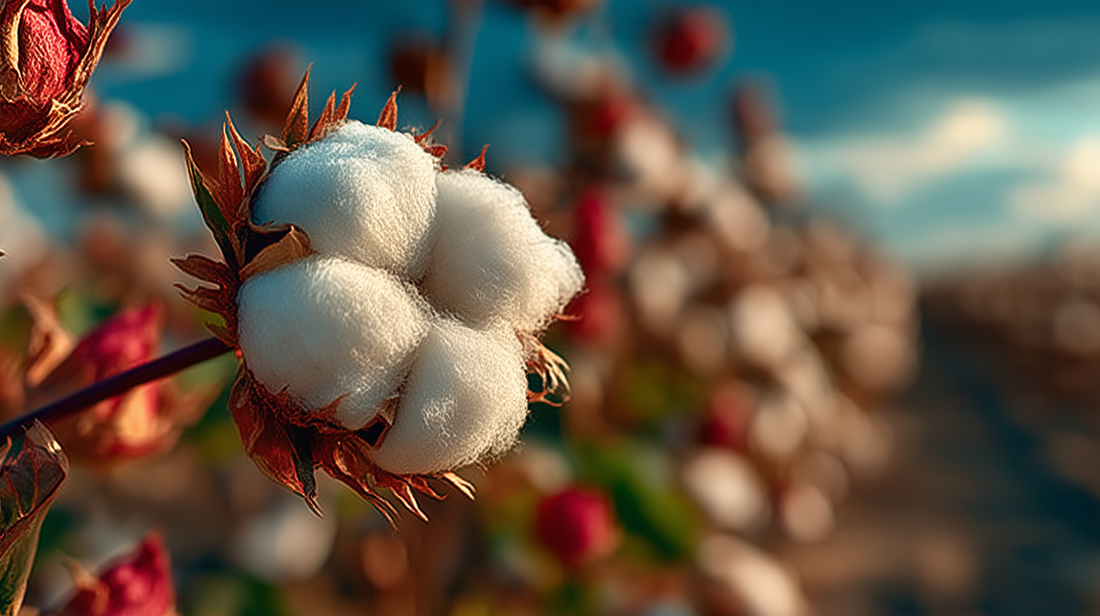
What is Supima Cotton?
In the beginning of our business, we weren’t well aware of the different varieties of cotton. However, with the evolution of the textile industry, a wide range of cotton varieties started coming to India. Recently, many people have been asking, "What is Supima Cotton?" Before diving into the details of Supima Cotton, let’s first learn a little bit about cotton itself. Cotton is one of the oldest resources we use in nature; we’ve been using it as far back as 5000 BCE. Cotton originated in the Indus Valley (modern-day Pakistan and Northwest India).
There are many varieties of cotton in the world, but genetically, cotton is classified into four categories:
- Gossypium hirsutum
- Gossypium barbadense
- Gossypium arboreum
- Gossypium herbaceum
Supima Cotton falls under the Gossypium barbadense species. This species is known for its extra-long fibers, smoothness, and durability. Supima Cotton wasn’t a “discovery,” but rather, it was developed as a premium variety of Pima Cotton in the United States. Supima Cotton evolved from Egyptian Cotton in the 1900s. The term "Supima" was coined in 1951 by the Supima Association of America, a non-profit organization established to promote and protect the quality standards of this cotton. Supima Cotton is mostly cultivated in the Southwestern US, including California, Arizona, New Mexico, and Texas. The name "Supima" is a combination of Superior and Pima Cotton, with Pima being a high-quality cotton named after the Pima Native American tribe that helped cultivate it in Arizona. Today, Supima Cotton is in high demand because it is one of the rarest cotton varieties in the world, accounting for less than 1% of total global cotton production, which makes it more expensive.
Now, let’s look at Supima Cotton’s characteristics:
Physical Properties
- Fiber Length: The basic characteristic of Supima Cotton is its fiber length since it is an ELS (Extra Long Staple) cotton type. Supima fibers typically measure 1.5 inches in length, compared to standard cotton fibers which are usually 1 inch or shorter. This long fiber gives Supima a distinct advantage.
- Strength: Next is strength. The strength of the cotton determines how long-lasting the T-shirt will be, and it also prevents pilling. Supima Cotton is 45% stronger than other cotton varieties, providing higher resistance to tearing and fraying.
- Fineness: In addition to length and strength, fineness is crucial for T-shirt wearers. Supima Cotton stands out in this regard as well. It becomes softer with each wash, giving the T-shirt a very smooth and flowy structure. This softness adds to the durability, as Supima cotton yarns are very uniform.
Performance Characteristics
- Durability: Cotton products can be expensive, but many suffer from shrinking or shedding after a few washes. However, Supima Cotton is very durable and offers exceptional longevity. It resists pilling and maintains its shape after multiple washes. Moreover, Supima has superior color retention compared to standard cotton.
- Comfort: While some cotton tees can feel rough or not be skin-friendly, Supima Cotton offers an exceptionally soft hand feel and is breathable. During rainy seasons, its moisture-wicking properties help you stay comfortable.
- Appearance: Supima Cotton has a naturally polished look, with a distinct shine that enhances color absorption. Colors fade much more slowly in Supima Cotton compared to standard cotton, and its superior draping quality gives an outstanding appearance.
Why Not Grow Supima Cotton in India?
Many people wonder, "If Supima is so high in demand and a quality product, why isn’t it cultivated in India?" The answer lies in the geographical requirements for growing Supima Cotton.
Environmental Conditions
Climate & Soil: Supima Cotton has a longer growing season than standard cotton, taking around 200+ days (almost 7 months) to grow. It requires hot and dry conditions with minimal rainfall during its growing period. Any deviation from these conditions can ruin the quality of Supima. It also needs well-drained soil with a slightly alkaline pH, rich in organic matter, which supports root development. India's climate and soil conditions are generally not suitable for cultivating Supima Cotton.
Cultivation Practices
- Planting: Supima Cotton is typically planted in the spring when soil temperatures reach around 60°F (15°C) or higher. In the United States, particularly in California, Arizona, New Mexico, and Texas, planting usually occurs between April and May.
- Maintenance: Ensuring the healthy growth of Supima Cotton involves regular pest monitoring, precise fertilization schedules, and balanced water management. These practices help maintain the quality of the fibers produced. Additionally, strict quality control measures are implemented throughout the process.
Production & Processing
Harvesting: Supima Cotton is harvested with careful timing and methods to preserve quality. In the U.S., most farms use mechanical harvesting due to high labor costs. Quality control during harvesting is paramount, ensuring the long fibers are handled carefully before being sent for processing.
Processing Steps:
- Ginning: This process separates the cotton from the seed, using specialized equipment to preserve the fiber length and quality.
- Cleaning and Sorting: The cotton is cleaned using strong air machines to remove plant debris. The cotton is then graded based on fiber length, strength, and softness. At Varthagam International, we only use top-grade Supima Cotton, ensuring we provide the best quality to our customers.
- Spinning: Once graded, the cotton is spun into fibers and yarns, which are then used to create multiple products.
After going through this long process, we finally receive premium Supima Cotton to make our soft and fine T-shirts. Many experiments are currently being conducted to increase Supima Cotton production in the future.
Conclusion
Thank you for your patience and enthusiasm in learning about Supima Cotton. At Varthagam International, we don’t take risks when it comes to quality. We import Supima Cotton directly from the U.S. to ensure we deliver the best products to our customers. We won’t compromise on quality to save a few rupees. Your satisfaction and trust are our top priorities.



